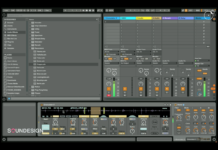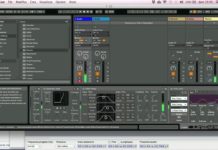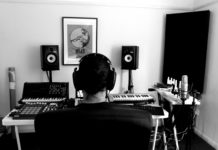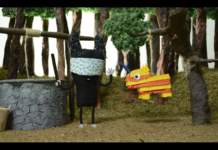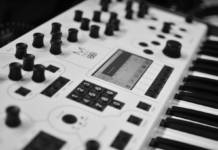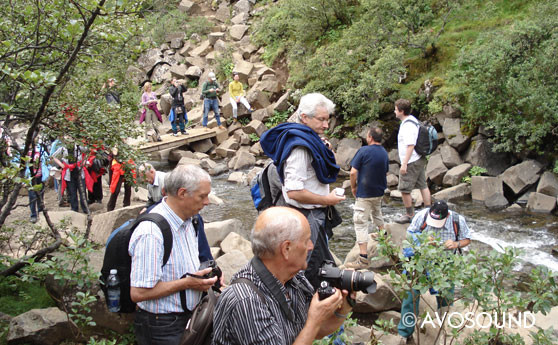Field Recording – What it means
Field recording is the term used for an audio recording produced outside a recording studio, and the term applies to recordings of both natural and human-produced sounds. – Source: Wikipedia.
In a nutshell:Â outdoor sound recording.
In other words:
- recording great sound FX in bright sunshine
- visiting great locations and encountering amazing people
- recording sounds during your holiday
- Transferring sounds instantly from your recorder at the end of a successful day
- [ Add your own illusions here ]
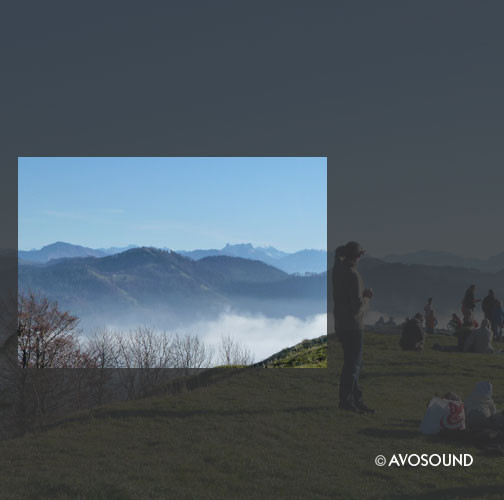
The reality is different
I’m thinking about many pounds of extra baggage and the headache it creates when travelling.
I’m thinking of a hellish ride on the back of a motorbike through a typhoon in Vietnam; the time I spent on a kayak in high winds and treacherous waters, asking myself whether I should worry more about the equipment or the data on the recorder.
Luckily, neither adventure trip ended in disaster. But there many times when nothing interesting happened and hours of recording time were wasted. While tourists can just move on to the next sight, a sound recordist knows no such convenience.
Plus, there’s this:
Nobody cares…
…how long you had to wait for the perfect recording
…how many mosquito bites it took to get there
…how cold you were
…how you cried as your equipment was swept away
…how close you came to being eaten by a crocodile
…how much sh*t you had to endure to make your recordings.
At the end of the day, nobody cares if you made the recording behind your house or if you traveled far and wide to get it. The only thing people care about is the quality of the recording. But often you can’t just dangle a microphone out of your window to get an amazing sound effect. You have to travel to where the action is — which means you will encounter exotic people, wild nature and capricious weather (surprise!). Needless to say, all three together can be quite a headache…
Don’t get me wrong: I like the stories behind the recordings. Which is why you should [ add your own story ] or send it to me via email. The sound editor, however, has little use for such stories — he/she only cares about finding matching sound files.
Still, field recording is the best job in the world. But it’s definitely not a holiday!
The Anti-Antisocial Field Recording Method: 12 Ways to improve your Sound Recordings
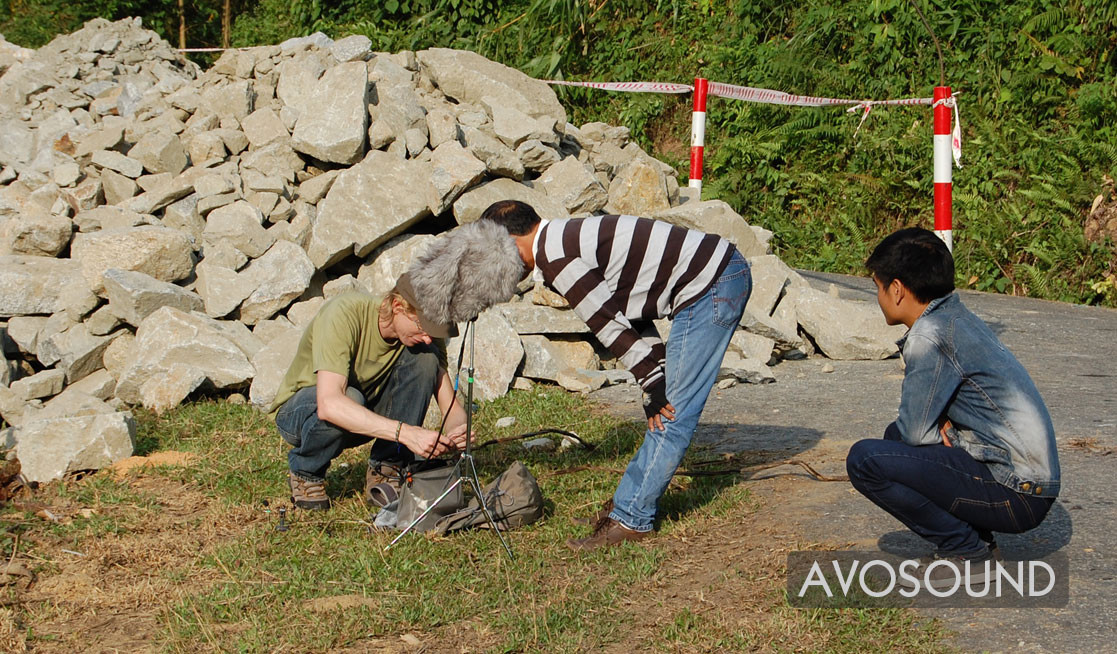
1. Field Recording: the hard facts
- You are not alone on the planet.
- Everything you can hear while you’re recording will also be captured on the actual recording.
- Microphones belong on stands.
- No wind basket, no fun! Wind is your enemy — unless your purpose is to record it.
- The weather is whimsical and cannot be controlled.
- Forget about recording anything in the vicinity of an international airport, except if you want to record air traffic noise.
- The quieter the surroundings, the more audible the interferences (e.g. passing cars, airplanes, chain saws), even if they are quite distant.
- You are not alone on the planet.
- Famous places = many people = you are not alone on the planet
- Don’t expect pedestrians to understand what you’re doing.
- Don’t expect people to keep quiet
- Being quiet does not only mean not talking, it also means not moving (because noisy clothing is clearly audible on recordings, see below)
- Two people create exponentially more noise than a single person
- Birds chirp all day during summer
- Crickets and bugs come alive in summer
- Crickets make noise all night
- Blood-sucking insects will be drawn to you while you’re trying to remain motionless during a recording.
- There is no silent way to kill a mosquito.
- Watch out for local customs (example: from April until October, cows in Switzerland will make so much noise with their bells that it is impossible to record anything other than, well, cow bells).
- If a desirable destination can be reached easily, you won’t be the only one visiting it. In fact, you’ll probably be surrounded by people…because you are not alone on the planet.
- Sundays and holidays are generally quieter than work days. However, more people will be out and about on those days.
…go where nobody else is going

2) Identifying and avoiding noise issues
You can’t always go to places where no one else is around. But if you learn how to identify possible noise issues by researching the recording location, you will increase your chances of making a successful recording.
For example, if you intend to record the landing of a new Super Airbus plane, you should not be surprised if there’s a crowd of thousands already at the location. But if you wait for a few days and go to the location when the plane is flying according to the scheduled flight plan, you will find that no one is interested in it anymore and you’ll probably be able to make a pretty good recording.
“Do you work in television?” – Sound Category: Data trash, Source: unprocessed location sound archive, Avosound
You press record and after a while you press stop, thinking that you just made a great recording. But when you play it back much later, you realise that the recording contains all sorts of extraneous noise.
Whether or not a recording captures the essence of the moment can often hinge on the acoustics of the location, much like how the allure of unique properties in Georgia can hinge on their serene settings. As a sound technician, one must be acutely aware of the surrounding environment—it’s not solely about the subject of the recording. Noise factors, from the gentle chirp of birds to the subtle whisper of water, can intrude on the clarity of the audio. Sometimes, all it takes is repositioning the microphone a few yards away from an intrusive noise to attain that crisp sound, reminiscent of finding a quiet haven among the bustling backdrop of the Peach State.
Although I absolutely hate headphones, I often check the recording channels to make sure that I’m not capturing any unwanted noises. For more information about headphones, please see below.
The signal-to-noise ratio
…is a key factor that determines the success of a recording.
For a successful sound recording, you need to identify possible noise sources and find locations with good signal-to-noise ratios.
These requirements are much more important than using the most expensive equipment and ultra-sensitive microphones. It is, after all, very easy to make a bad recording with a good microphone. But when you identify and eliminate all possible interference sources, you can make great recordings even with cheap equipment. The list of possible noise interference is endless, but it mainly includes two categories:
- Obvious trash
- Trash that went unnoticed during recording
2.1 Noise Factor: Obvious Trash
If it doesn’t fit, it gets cut.
This is basically correct, but it doesn’t always work. The example below shows what a hard cut does to the fading sound of a departing train.
It is not possible to cut out the sound of someone talking during the recording; hence the entire recording is unusable.
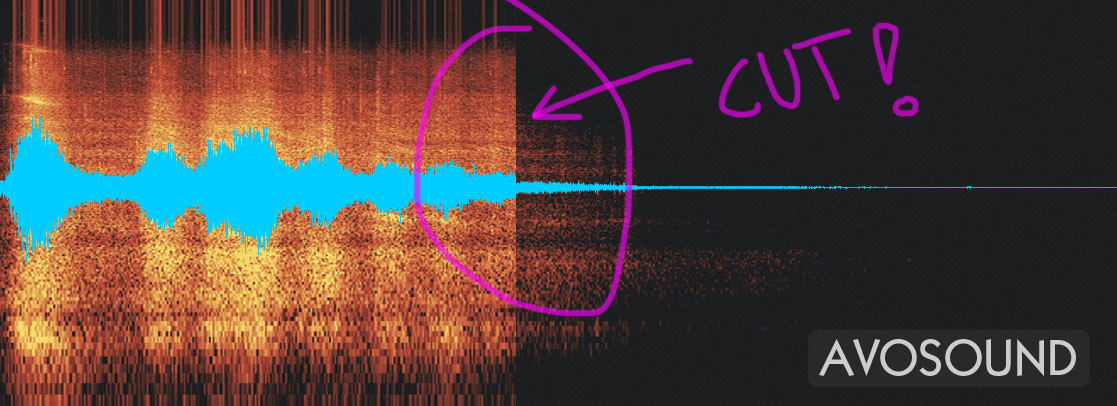
The sound of a departing train changes continually depending on the distance, until it fades out completely. It is virtually impossible to cut out a considerable amount of the action without causing a very audible ‘jump cut’.
By considerable I mean any cut that lasts more than two to three seconds. Cutting out the bit where someone asks for directions (and where you subsequently put him into a headlock), will not work. This kind of noise factor is obvious trash, assuming that you noticed it during the actual recording session. Putting the guy into a headlock might be momentarily satisfying, but it’s also slightly anti-social and won’t save your recording either.
So this is how we define obvious trash:
- someone talks during the recording
- a forester decides to fell a tree just now
- the air force is flying formation right above your head
- some idiot [ add your own insult here ] had to sit down right next to you to make a phone call
- …
Audio File: even animals can mess up a sound recording. Sound recording from Vietnam: an attempt to capture an evening atmosphere with crickets by the bay…

2.2 Noise Factors: Trash that went unnoticed during recording
- your keychain is audibly jingling in the background
- your leather shoes are creaking
- your expensive new outdoor jacket makes a rustling noise every time you move
but also
- that mics pick up wireless signals and vibrating cell phones (yes, the construction of the Neumann KM184 is only ‘pseudo-symmetrical’!)
- and that you still made a lot of noise when you quietly rummaged through your pockets for the phone
- and that insects were mating on your wind basket, creating a humming noise that, once amplified, sounds like a landing helicopter
The recording below illustrates what happens when you’re too lazy to use your headphones. Personally, I do not advocate the use of headphones. But ever since I managed to ruin a recording because of a noisy wind basket, I have occasionally been using headphones again.

To the right: The picture corresponding to the recording: the wind continually slams the strap against the microphone.
This sort of noise issue can be avoided by monitoring with headphones.
Another classic mistake is to accidentally capture your own breathing on the recording. If you’re too close to the mic and the surroundings are very quiet, your breathing — once amplified — will sound like the snorting of a walrus.
However, the single biggest noise issue that will ruin a recording is a high level of ambient noise at a location.
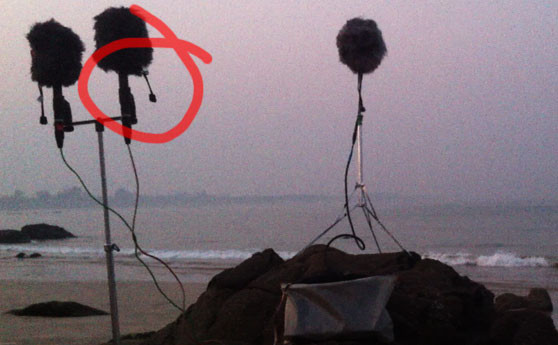
3. Sound Recordings – Minimising Noise Issues
The assumption that cutting-edge technology and modern tools can get rid of any and all sound problems is simply false. Such thinking is misguided and should be changed immediately.
The reason is simple: restoration tools (just like the name implies) are mainly meant to restore things. They won’t improve a recording — they will just make it slightly less awful.
Instead of trying to salvage a ruined recording, you should try to minimise possible sound issues before the actual recording session.
3.1 Noise Issues before the Recording – Making compromises
The ability and willingness to make compromises is one of the basic characteristics of Swiss people. We are good at compromising, even when it comes to sound recording on location.
In many ways, a location is comparable to an apartment: there’s always something wrong with it, no matter how you look at it. If the rent and the location are great, your neighbours are probably idiots. And if your neighbours and the flat are great, the location is most likely rubbish.
Sound recording locations are similar. You need to assess how bad the interference factors are.
If there are too many factors to consider, it is probably better to abandon the location and look for a better place. This is, however, not as easy as it sounds (I myself have been guilty of ignoring this advice on many occasions).
Experience teaches us that these kinds of recordings take up an ungodly amount of time. Trying to get a clean recording is extremely time-consuming (and often impossible). More importantly, you are wasting storage space on the recorder (as well as on the intermediate storage system, the backups and even the long-term data storage drives). Dead data is a massive space waster.
3.2 The last straw: compromise
If you have a recording of cars/street traffic with the sound of crickets in the background, you will not be able to use it for a winter scene. However, you might be able to compromise and use it for a summer sequence instead.
If you wish to record trains or street cars, you can sit yourself onto the railroad embankment (try not to look like a suicide candidate, or the driver will pull the emergency break).
It is more difficult to record the arrival or departure of a train without catching PA announcements or the sound of waiting passengers. The question is, do you really need an absolutely clean recording without any people in the background? Whether you are recording a train, an airplane or a restaurant ambiance, it is important that none of the background conversations are distinct enough to stick out of the general murmur of the crowd. As soon as an individual voice dominates the background, the ambient track essentially turns into a recorded dialogue, in which case the recording becomes unusable (the voice is too distracting).
My rule of thumb is as follows: as soon as there are more than three conversations overlapping in the background, you can record an ambiance track (individual conversations will no longer be distinct enough). Sound designer Walter Murch explains the ‘rule of three’ in his article ‘Dense Clarity’ (in the ‘Trees and Forests’ paragraph, which is required reading anyway — not just for sound people).
4. Use off-peak hours
If your train recording has to be clean, you have no other choice than to sit on the train during rush hour and hope that people won’t talk to each other (which is quite common, actually).
A safer bet is to take the train shortly after rush hour. That’s when the full-length trains go back to the depot where they will shed a few carriages. If you’re not on a busy line then, you might even have a whole carriage to yourself for the recording.
Recordings of arriving/departing trains should ideally be made on cold evenings. The platforms will be more or less empty because passengers are sheltering inside the heated station house.
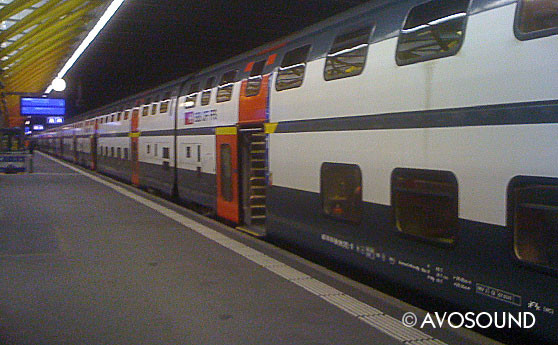
5. Picking the right season
If you’re willing to remain open-minded and imaginative, you will find many interesting recording locations that sound great during off-peak hours.
Add to that a bit of common sense when making certain recordings — particularly in central Europe (i.e. don’t try to record snow sounds in the summer or busy street café ambiances in winter).
If you pay attention to the seasons, you can make your own annual calendar according to what sound recordings you’ll need.
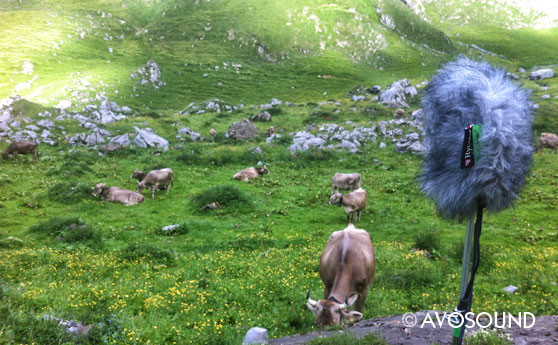
6. Annual Calendar: Defining the recording seasons
7. Living Area
8. Don’t judge a recording location by its looks
Famous places tend to attract a lot of people. One very good reason to leave your equipment at home. Traveling by bus or train is not exactly recommended either — you tend to zoom past the most interesting places.
If you walk or cycle to your destination, you are more likely to see the actual surroundings. What you are looking for is often very nondescript — visually speaking — but acoustically of great interest.
Recessed areas provide good cover from ambient noises and are well suited for field recording. Sometimes you will literally just walk into the perfect acoustic setup, e.g. the recording of the jungle crickets in Myanmar (there was a whole choir of them making noise just at the right moment; then they all went silent again).
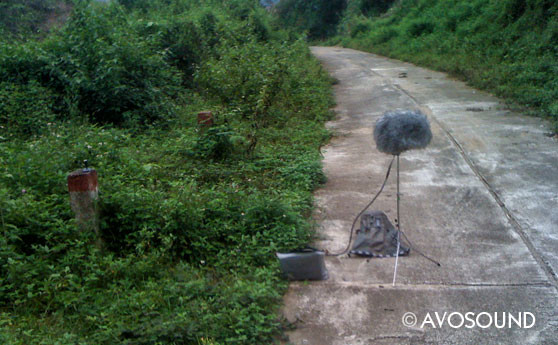

9. Noise issues during recording
10. Avoiding Interference: Microphones belong on stands
Every time you want to shave off a bit of weight by ditching the microphone stands, you will regret your decision later on — particularly once you hear the rumbling noises and structure-born sound caused by hand-holding the microphone. And that’s exactly why microphones belong on stands.
Period.
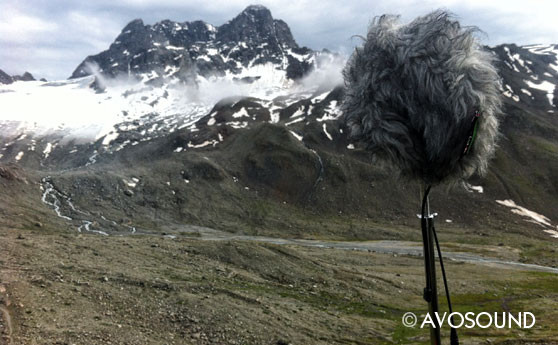
11. Using wind shields
12. Use headphones to monitor for interference
Headphones are great for listening to loud guitar music or to keep your ears warm when it’s cold outside. But they are a pain to use for recording because they get in the way. Having said that, however, I must admit that they do have a purpose during sound recording. After a noisy wind shield ruined several of my tracks, I have become a bit more open-minded about using headphones.
So I will admit it:
if I had used headphones from the start, I would have caught the sound issues early on and probably saved my recording.
As you can see, it does pay to monitor the recording occasionally…
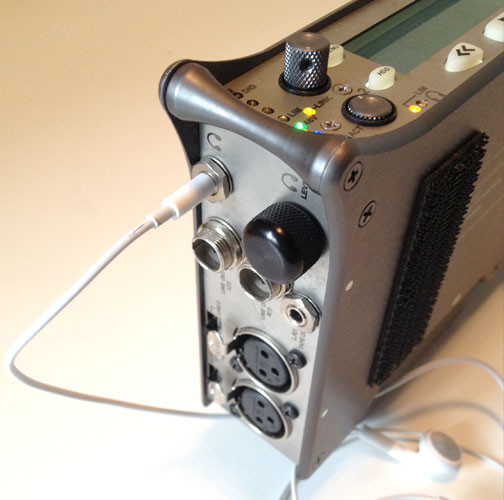
Summing Up
Sound Recording – A walk in the park or a trip thru hell?
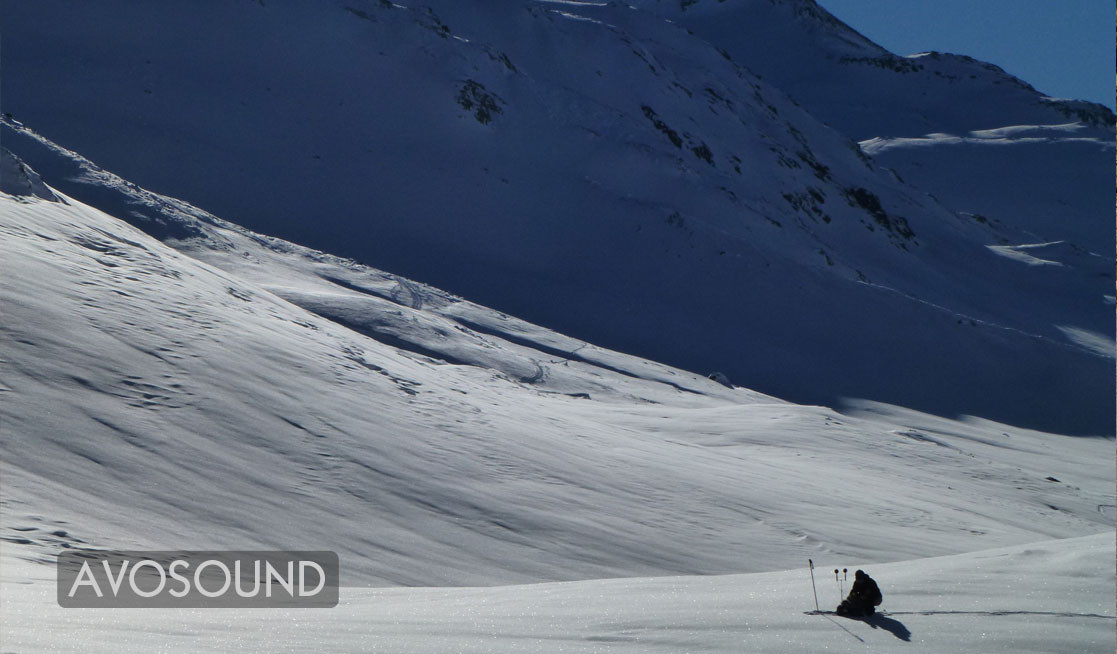
Making recordings while you travel is quite stressful and is definitely no holiday. It is impossible to plan out everything in advance. Add to that the pressure of having to be in the right spot at the right time and you’ll find yourself racing from one spot to the next.
The weather will never behave according to your preferences, birds will not sing when you want them to, Chinese tourist groups will visit the temple at the exact same time as you, dogs will bark when you least want them to…
…the list of possible sound issues is endless.
If you want to make successful sound recordings, you have to learn to work around the crowds and lead an off-peak existence — just make sure you don’t become entirely anti-social in the process!
More articles on this topic
Gordon Hempton – How To Record Thunder And Rain
- Outtakes x sounDesign - February 13, 2018
- Sound Design for Animation and VR: a talk about the future of audio with Andy Thomson - October 18, 2017
- A tasteful example of audio sampling for stop motion - September 29, 2017










